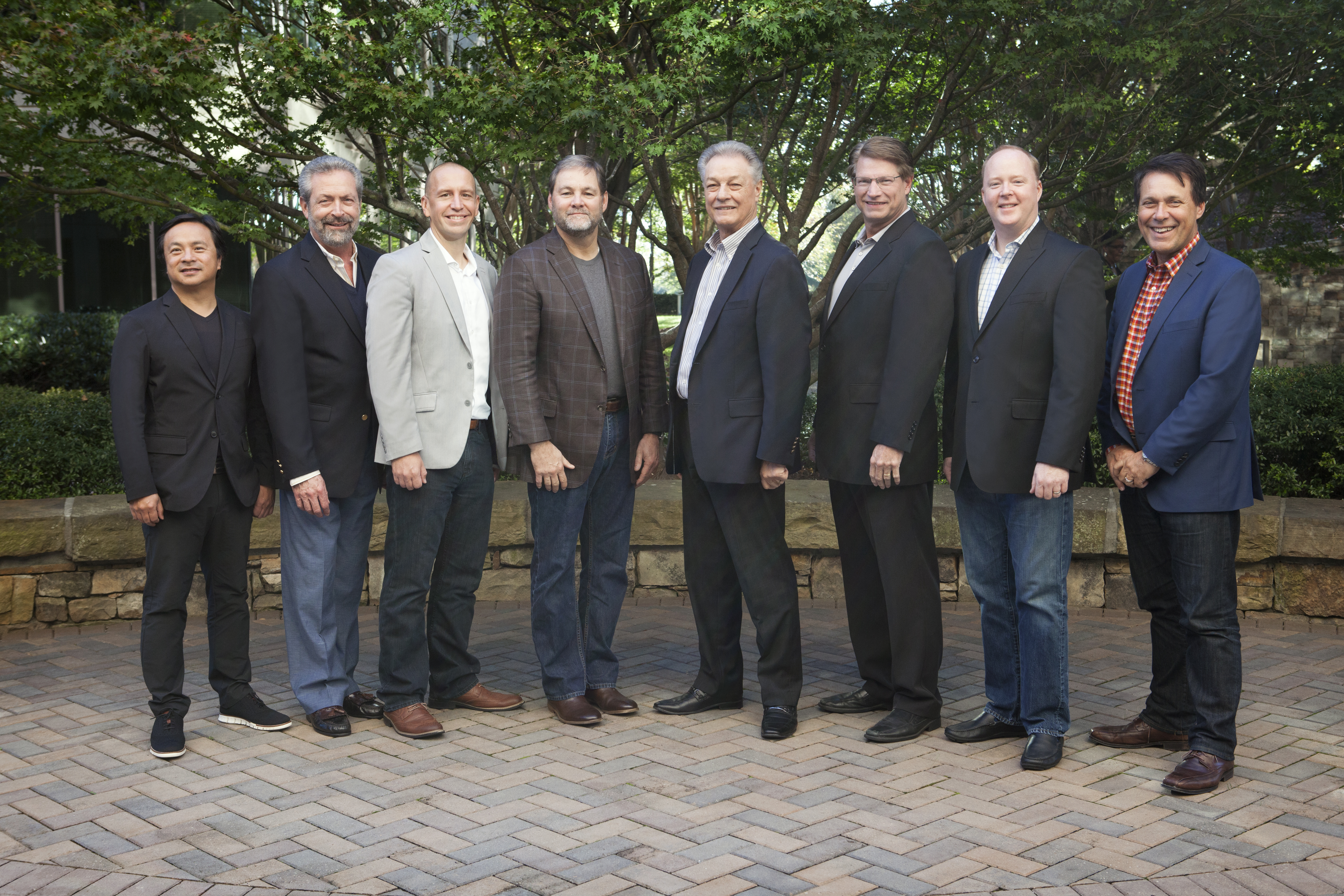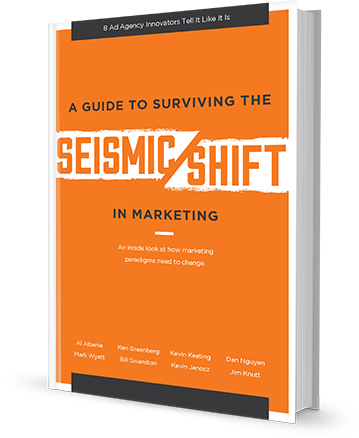What we learned about future marketing applications of Virtual Reality
Every year, one of the eight member agencies of NAMA (North American Marketing Alliance) hosts its annual conference at their agency. This year, that agency was Frederick Swanston. Members joined us in Alpharetta over the course of two days for informal presentations and discussions about anything and everything happening in advertising over the past year.
One of the presentations, given by Jim Knutt of Tropic Survival in Miami, Florida, focused on the increasingly effective use of technology in everyday marketing. If you are anything like me, when you read some of the examples below, you will immediately be thinking about how they can be applied to high-tech marketing.
Here are key examples from Jim’s amazing tech marketing presentation in a nutshell.
According to Jim, augmented reality, apps and VR are finally starting to grow legs to carry off high-profile marketing campaigns. His examples are truly inspiring.
Cool Marketing Example #1: A Viral App for 19 Crimes, a Wine Company
Let’s face it, most people are guilty of one crime: buying a bottle of wine just because it has a cool label. Well, 19 Crimes took that concept a little farther by creating a smart label that interacts with an online app. Customers can simply launch the app and point their phones at the label to see it come to life. And when I say, “come to life,” I mean the criminal on the bottle will literally speak to you and confess his crime. It’s no surprise 19 Crimes wine is currently flying off shelves.
Jim gave us a demonstration of the app using his phone and one of the wine bottles, and it was incredible. Just imagine the uses for such an app when marketing high-tech products. Interactive labeling seems like something from the future, which means innovative tech brands should be all over it in the here and now!
Cool Marketing Example #2: A Virtual Reality App for Houzz
If you don’t know, Houzz is like Pinterest for those interested in decorating and home remodels. For instance, if you are remodeling a bathroom and are looking for inspiration, you can access over 25,000 images on Houzz.
The problem this VR app solves is that seeing decorative items in someone else’s house is one thing. Seeing them in your own is a game changer. And, that’s exactly what the app does. When you download the app and then point your phone at a product on the Houzz website (say, a chair), you can see that chair in the room where you are sitting. Think about how surreal that is for a moment. You can see the chair from every angle (high, low, left, right) and even change the color of the chair if you want.
To take the app one step further, Houzz places dynamic price tags on every item. When you click on them, you are immediately taken to a website where you can purchase the items.
New technologies aren’t the same as chairs, but often it is hard for prospective customers to imagine how they will fit into their lives. An app such as this will allow them to see your high-tech product in their home environment, and once they’ve pictured it, they will be one step closer to buying.
Cool Marketing Example #3: Augmented Reality at Fairmont Hotels
Fairmont hotels include some of the most historic buildings in the United States because they were originally built to accommodate those using the railroad system. Fast forward a hundred years, and the brand is having difficulty connecting with a younger audience that sees them as outdated and stodgy.
In response, Fairmont Hotels has invested $50 million toward renovations and is eager to showcase its new look. What better way than through augmented reality? Now, at check in, your Fairmont Hotels clerk will hand you a small brochure featuring up to eight separate locations within the hotel. Visit those spots, point your phone, and a video history comes to life. Visit all eight and use the app on them, and you get an offer on your phone for a free drink.
In the background, the app uses your check-in and loyalty number to record who you are and how many places you virtually visited. Pretty innovative for a hotel that was recently considered out of touch. In fact, it’s helping rebrand the Fairmont as a pretty forward-thinking hotel chain.
Jim’s takeaway, which was in line with many of the NAMA presentations we heard, was that as marketers we must find new ways to appeal to younger, more tech-savvy generations without alienating current, loyal customers. Apps, VR and augmented reality are a cutting-edge way to pull away from the competition, showcase your brand’s innovative spirit and share your high-tech brand’s benefits all in one hyper convenient place. That was enough to make this year’s conference worthwhile!
Every year, one of the eight member agencies of NAMA (North American Marketing Alliance) hosts its annual conference at their agency. This year, that agency was Frederick Swanston. Members joined us in Alpharetta over the course of two days for informal presentations and discussions about anything and everything happening in advertising over the past year.
One of the presentations, given by Jim Knutt of Tropic Survival in Miami, Florida, focused on the increasingly effective use of technology in everyday marketing. If you are anything like me, when you read some of the examples below, you will immediately be thinking about how they can be applied to high-tech marketing.
Here are key examples from Jim’s amazing tech marketing presentation in a nutshell.
According to Jim, augmented reality, apps and VR are finally starting to grow legs to carry off high-profile marketing campaigns. His examples are truly inspiring.
Cool Marketing Example #1: A Viral App for 19 Crimes, a Wine Company
Let’s face it, most people are guilty of one crime: buying a bottle of wine just because it has a cool label. Well, 19 Crimes took that concept a little farther by creating a smart label that interacts with an online app. Customers can simply launch the app and point their phones at the label to see it come to life. And when I say, “come to life,” I mean the criminal on the bottle will literally speak to you and confess his crime. It’s no surprise 19 Crimes wine is currently flying off shelves.
Jim gave us a demonstration of the app using his phone and one of the wine bottles, and it was incredible. Just imagine the uses for such an app when marketing high-tech products. Interactive labeling seems like something from the future, which means innovative tech brands should be all over it in the here and now!
Cool Marketing Example #2: A Virtual Reality App for Houzz
If you don’t know, Houzz is like Pinterest for those interested in decorating and home remodels. For instance, if you are remodeling a bathroom and are looking for inspiration, you can access over 25,000 images on Houzz.
The problem this VR app solves is that seeing decorative items in someone else’s house is one thing. Seeing them in your own is a game changer. And, that’s exactly what the app does. When you download the app and then point your phone at a product on the Houzz website (say, a chair), you can see that chair in the room where you are sitting. Think about how surreal that is for a moment. You can see the chair from every angle (high, low, left, right) and even change the color of the chair if you want.
To take the app one step further, Houzz places dynamic price tags on every item. When you click on them, you are immediately taken to a website where you can purchase the items.
New technologies aren’t the same as chairs, but often it is hard for prospective customers to imagine how they will fit into their lives. An app such as this will allow them to see your high-tech product in their home environment, and once they’ve pictured it, they will be one step closer to buying.
Cool Marketing Example #3: Augmented Reality at Fairmont Hotels
Fairmont hotels include some of the most historic buildings in the United States because they were originally built to accommodate those using the railroad system. Fast forward a hundred years, and the brand is having difficulty connecting with a younger audience that sees them as outdated and stodgy.
In response, Fairmont Hotels has invested $50 million toward renovations and is eager to showcase its new look. What better way than through augmented reality? Now, at check in, your Fairmont Hotels clerk will hand you a small brochure featuring up to eight separate locations within the hotel. Visit those spots, point your phone, and a video history comes to life. Visit all eight and use the app on them, and you get an offer on your phone for a free drink.
In the background, the app uses your check-in and loyalty number to record who you are and how many places you virtually visited. Pretty innovative for a hotel that was recently considered out of touch. In fact, it’s helping rebrand the Fairmont as a pretty forward-thinking hotel chain.
Jim’s takeaway, which was in line with many of the NAMA presentations we heard, was that as marketers we must find new ways to appeal to younger, more tech-savvy generations without alienating current, loyal customers. Apps, VR and augmented reality are a cutting-edge way to pull away from the competition, showcase your brand’s innovative spirit and share your high-tech brand’s benefits all in one hyper convenient place. That was enough to make this year’s conference worthwhile!


